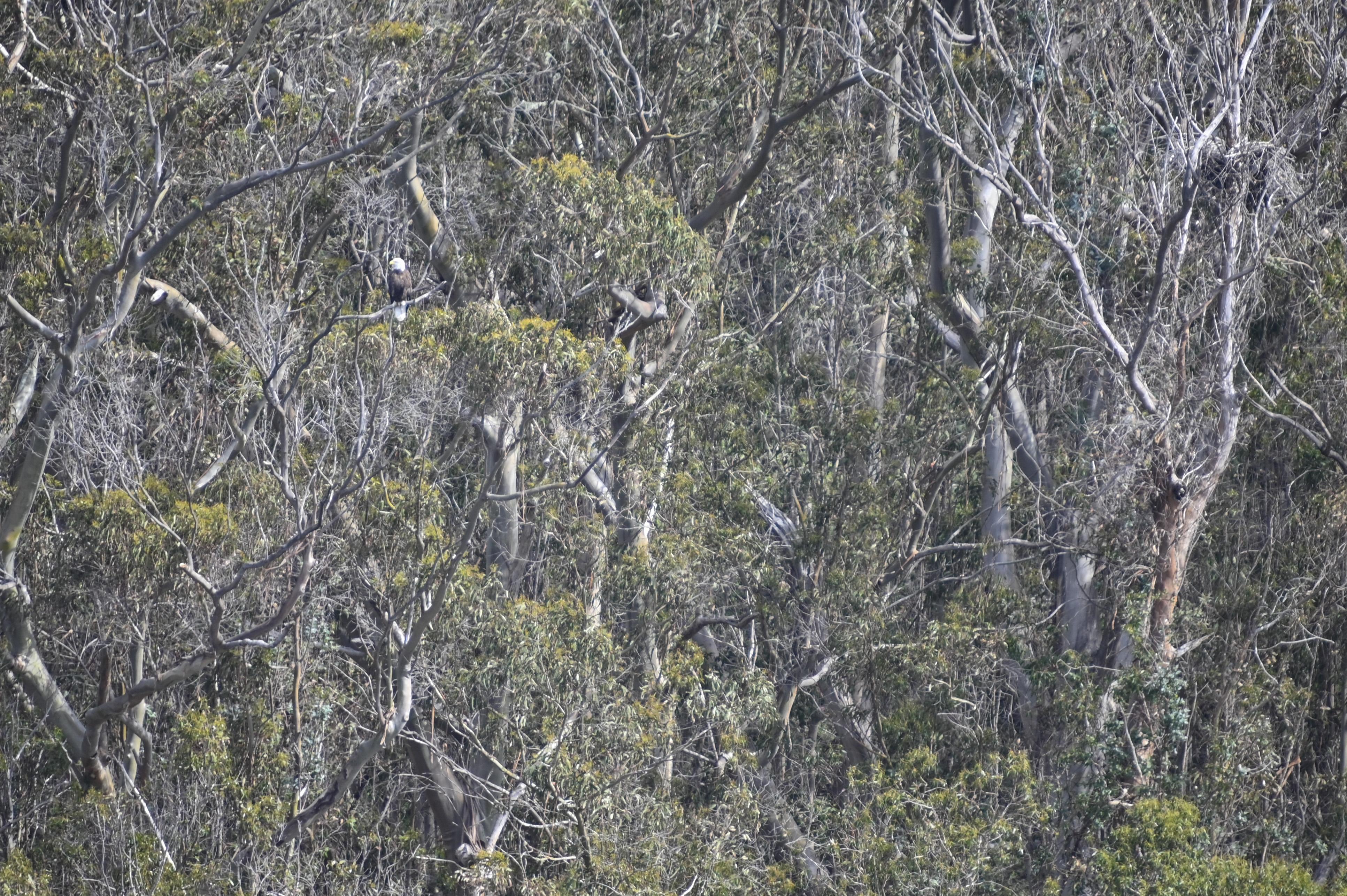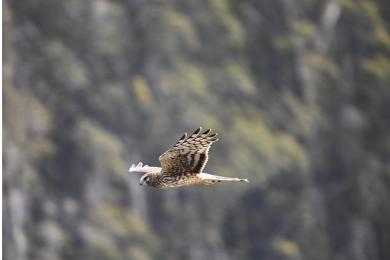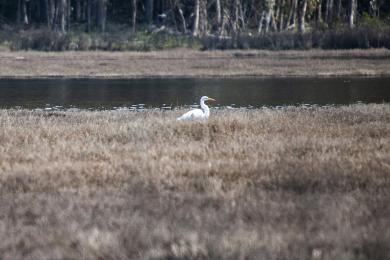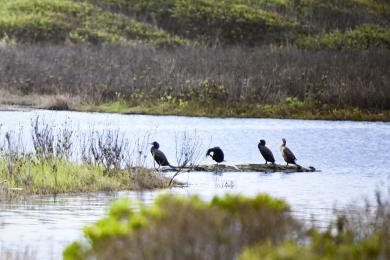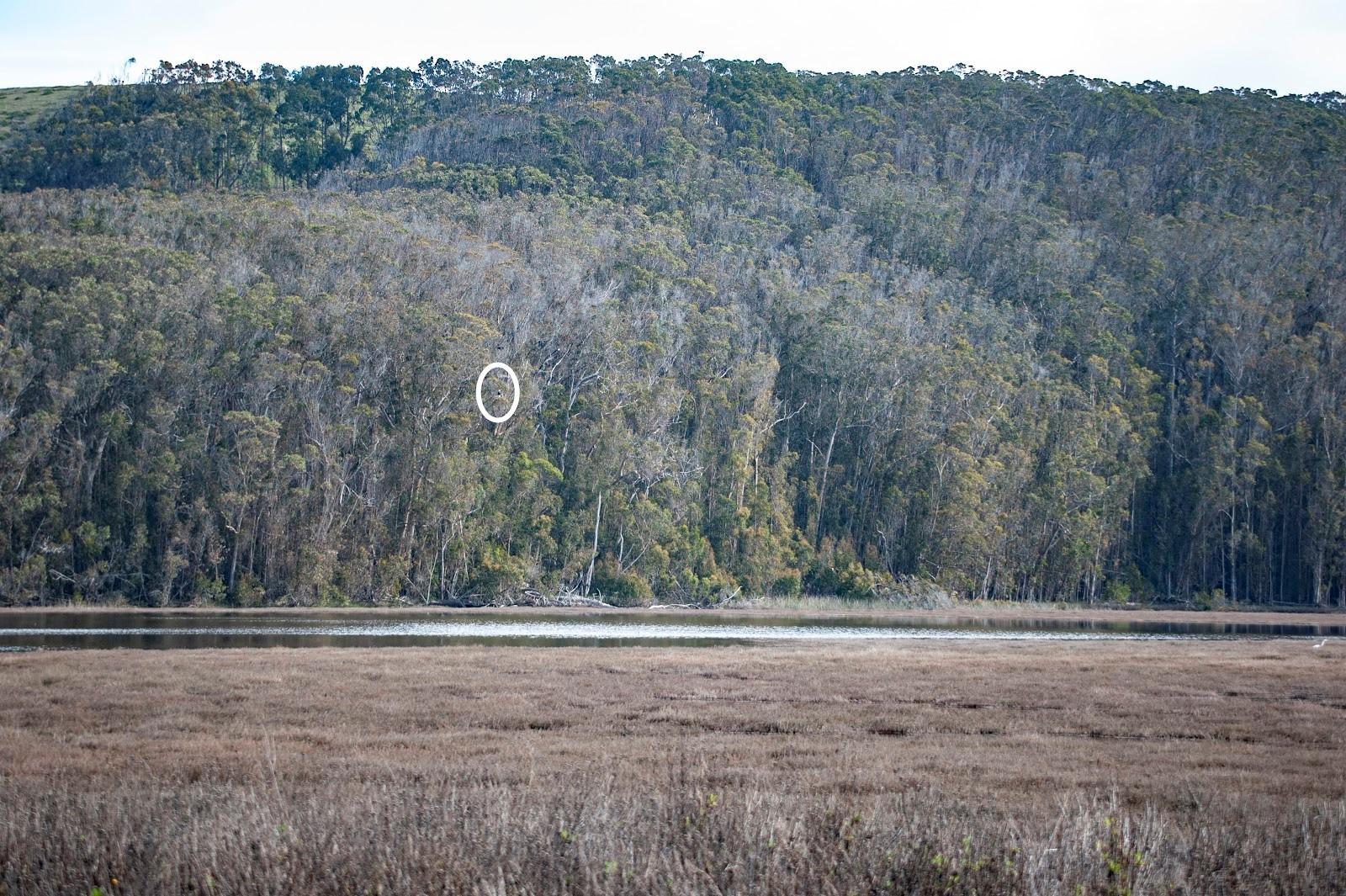On December 20, 2020, a pair of bald eagles was spotted, exhibiting branch-carrying nesting behaviors, amongst Pescadero Marsh’s eucalyptus grove. If these eagles nest successfully, they will make history as just the second pair to do so in San Mateo County in the last 100 years. Their presence, the result of a decades-long conservation effort, is evidence of the return of a species that was - until recently - on the brink of extinction.
Bald Eagle Decline, Protection, and Recovery
Bald eagles once nested the entire Pacific Coast, from the Aleutians to the tip of Baja California. When America adopted the bird as a national symbol in 1782, over 100,000 nesting eagles may have called the country home. By 1963, only 487 nesting pairs remained in the lower 48.
This decline was due, in large part, to the use of DDT (dichloro-diphenyl-trichloroethane). Beginning in WWII, this synthetic insecticide was used to combat mosquito-borne diseases and increase crop production. DDT use essentially eradicated malaria in the United States - but at the same time, unbeknownst to its users, it was also killing our national bird.

photo: © S. Gee
By its ban in 1972, DDT was found to cause fatal eggshell thinning in top avian predators. But by then, it was too late. Populations of bald eagles (as well as ospreys, pelicans, and peregrine falcons) in the lower 48 states were decimated. By the 1970s, bald eagles were no longer nesting anywhere on the coast of California.
At that point, the Endangered Species Act of 1973 was passed. Bald eagle conservation efforts began in earnest, with a goal of establishing at least four productive pairs of bald eagles in California’s central coast region. To do so, scientists collected eaglets in British Columbia and released them in Big Sur. Due to these efforts and others, bald eagles were taken off the threatened and endangered species list in 2007. Today, there are more than thirty bald eagle pairs throughout the region - far exceeding the original goal of four.
In the last decade, bald eagle conservation efforts have even become visible in the Bay Area. This was almost unthinkable not too long ago, when only 30 nesting pairs remained in California - all in the northern half of the state. In 2013, a bald eagle pair successfully fledged an offspring from a nest at Crystal Springs. They were the first pair to do so in San Mateo County since 1915 - and if the pair at Pescadero Marsh is also successful, they will make history as the second.
“The fact that they are back and thriving is testament to the environmental protection laws enacted fifty years ago,” says Glenn Stewart, who spearheaded the bald eagle repopulation effort as founder of the Ventana Wildlife Society and director of the Predatory Bird Research Group at UCSC. “It’s very satisfying - a real vindication of all the effort and sacrifice that went into getting the project off the ground.”
Despite the species’ successful return, the forests, lakes, and coastlands that bald eagles call home are still under threat. Conserving these areas will be critical going forwards for the eagles, as well as for humanity. Stewart explains:
“What people need to know about bald eagles is that they are indicators of the health of the environment. Whatever affects them trickles down to the rest of the ecosystem. The way we are going, one of these days it will be too hot for them to lay in their un-shaded nests to incubate and they will disappear again. And things will change for the rest of us.”
The Future of Pescadero Marsh
For Pescadero Marsh, the bald eagle sightings bring both uncertainty and hope. For the next several weeks, local birders will be watching the area closely. It’s possible that these eagles may not decide to settle in the Marsh, as many eagles in California are just temporary residents from Northern Canada and Alaska seeking respite from cold winters.
The ecological impacts the bald eagles may have on the Marsh are also unknown. “I’m concerned about whether we will lose the great blue heron rookery if the eagles settle in,” says Avis Boutell, a California State Parks volunteer of 20 years.
Despite her concerns, Boutell is happy that the bald eagles are continuing their recovery. The presence of the eagles in the marsh is, she explains, “an example of their return from the brink of extinction.” Such a robust return, after such a drastic decline, is nothing short of inspiring - and a reminder that solutions exist for even the most seemingly hopeless challenges.
How You Can Help the Bald Eagles
Bald eagles are an American conservation success story and, as Americans, each of us has the power to continue to help protect them. To do so, we need to elect officials at the state and national level who will prioritize conservation. “It really is as important and as simple as that,” explains Stewart.
Just as the Endangered Species Act of 1973 brought bald eagles back from the brink of extinction, so can further conservation-minded legislation continue to protect bald eagles and the habitats they call home for generations to come.
“I’m telling you, it is somewhat emotional - proud to be an American - to see bald eagles atop trees [in the] wilderness,” Stewart describes. And, due to generations of conservationists past and still to come, a future where we can all experience this feeling may not be that far out of reach.
-----------
How to look for bald eagles at Pescadero Marsh Natural Preserve
To get to Pescadero Marsh, park in the middle Pescadero State Beach parking lot. Go down the staircase at the sound end of the parking lot. Turn left, travel north besides the highway, and take the stairs to the beach. Walk under the bridge to the marsh and take the Sequoia Audubon Trail until you have a clear view of the eucalyptus trees on the hill.
Stephanie Gee is a scientist, photographer, and CSPA volunteer sharing stories about human and ecosystem health. Her work has been published in Popular Science, Forbes, Fast Company, and more. She first fell in love with nature - and became dedicated to protecting it - in childhood, when she stood under the redwood trees of the Santa Cruz Mountains. See more at www.stephaniegeephotography.com.
Acknowledgements:
Avis Boutell (State Parks volunteer of 20 years) helped locate the eagle in Pescadero and identified the photographed bird species. She is currently monitoring the bald eagles at the marsh for further evidence of nesting. Glenn Stewart (former director of the Predatory Bird Research Group, UCSC; founding director of the Ventana Wilderness Society) provided a detailed history of bald eagle recovery efforts.
Sources:
Bald Eagle Fact Sheet, Natural History, Recovery: US Fish and Wildlife Service

